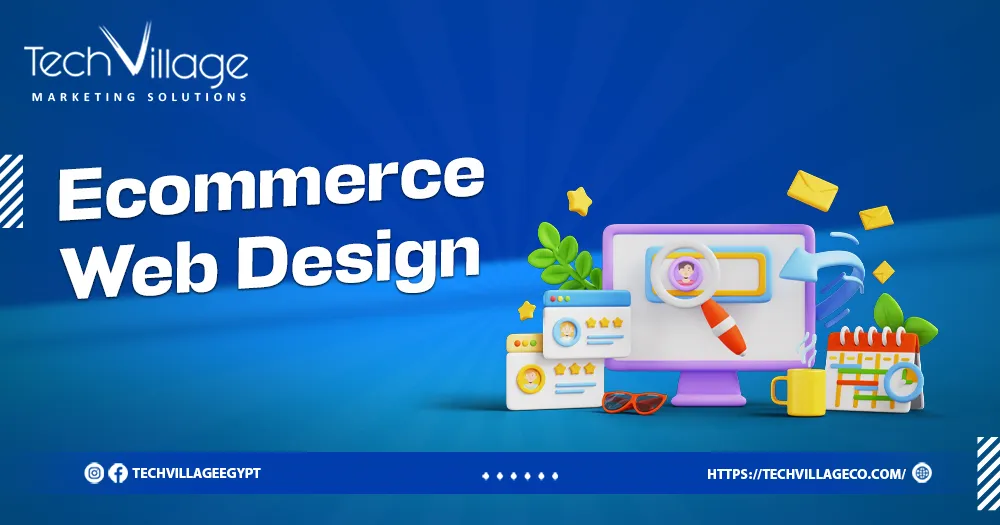e commerce web design plays a pivotal role in shaping the online shopping experience. It involves creating visually appealing and user-friendly websites that seamlessly integrate product displays, navigation, and secure payment gateways.
An e commerce web design not only attracts visitors but also ensures a smooth and intuitive journey from product exploration to checkout. In this digital era, where online transactions are commonplace, a well-crafted e commerce web design is crucial for businesses looking to thrive in the competitive world of online retail.
Table of Contents
ToggleWhat is e commerce web design?
e commerce web design involves creating and structuring online platforms to facilitate electronic transactions. It encompasses the visual and functional aspects of websites dedicated to selling goods or services online. e commerce web design considers user experience, interface design, product presentation, and secure payment gateways, aiming to optimize the online shopping journey for visitors and enhance business performance in the digital marketplace.
Get to know: What Is Google Trends In Digital Marketing.
Which e commerce platform is best?
When it comes to e commerce web design, there are many options for Phoenix systems, and each platform has its own features and strengths, so companies must carefully consider their needs and goals. Among the most popular e commerce web design that Phoenix systems integrate with are the following:
1. Shopify platform
It is one of the most famous e commerce web design platforms available today, through which you can create a professional online store with great ease and at the lowest possible cost. Among its most important features are speed in completing stores, inventory management, shipping, and accounting.
2. WooCommerce platform
It is a custom add-on for the WordPress content management system. It helps you create a free online store with simple and easy steps. It supports multiple languages and currencies, making it the most popular choice for companies in different countries.
It allows you to sell various physical and digital services and products, and offers many features such as inventory management and secure payments. Shipping and tax calculations.
3. Wix platform
It is a popular platform that enables you to create cloud-based websites. The Wix platform also allows you to create professional-looking websites quickly and easily without the need for advanced technical skills, and choose the site design from a group of templates and features for various purposes.
Read also: Best Digital Marketing Agency In Cairo.
4. Salla platform
It is one of the most famous electronic platforms in Saudi Arabia, and it is the first e-commerce platform in the Arabic language in terms of creation, general website and technical support. Its mission is to help you as a retailer in creating your own electronic store at the lowest cost and time possible and with ease and simplicity.
You do not need experience in the technical side in order to be able to start and launch your project. And promote your goods.
5. Prestashop platform
It is a popular open source e commerce platform that allows businesses to create and manage their online stores, offering a range of features and tools to manage products, orders, payments, and shipping. It is highly customizable and can be adapted to suit the needs of different companies and industries.
Get to know: What Is Google Trends In Digital Marketing.
How to create an e commerce website?
According to tech village, creating an e commerce web design involves several steps:
1. Define Your Products and Target Audience:
- Clearly outline the products you want to sell and identify your target audience.
2. Choose a Domain Name and Hosting:
- Select a unique and easy-to-remember domain name. Choose a reliable hosting provider for your e commerce web design.
3. Select an E commerce Platform:
- Choose an e commerce platform like Shopify, WooCommerce (for WordPress), or Magento based on your needs and technical expertise.
4. Design Your Website:
- Customize the website’s look and feel to align with your brand. Many e commerce platforms offer themes or templates.
5. Set Up Product Pages:
- Create detailed and visually appealing product pages with clear images, descriptions, and pricing.
6. Implement a Secure Payment System:
- Integrate a secure payment gateway to process transactions. Popular options include PayPal, Stripe, or others depending on your location.
7. Enable Shopping Cart and Checkout:
- Implement a user-friendly shopping cart and checkout process.
Get to know: The 3 Types Of Ecommerce Website Dubai.
8. Implement Security Measures:
- Ensure the security of your e commerce web design by using HTTPS, SSL certificates, and following best practices for online security.
9. Optimize for Mobile Devices:
- Ensure your e commerce website is mobile-friendly to cater to users on various devices.
10. Set Up Shipping and Tax:
- Configure shipping options and set up tax calculations based on your business location and customer locations.
11. Implement Analytics:
- Integrate analytics tools like Google Analytics to track user behavior and gain insights into your website’s performance.
12. Launch Your Website:
- Once everything is set up and tested, launch your e commerce website and start marketing it to your target audience.
13. Market Your Website:
- Utilize digital marketing strategies such as social media, SEO, and email campaigns to drive traffic to your e commerce web design.
14. Provide Customer Support:
- Set up customer support channels to assist users with inquiries, issues, or feedback.
Here’s: The Important Of Automotive Digital Marketing Strategy
What are the 3 types of e commerce?
When we talk about e commerce web design models, it is worth noting that there are three main types of e-commerce, which can be summarized in the following points:
1. B2B e-commerce
Or Business-to-Business in English. All electronic transactions involving products or services between businesses fall under this category of commerce. Traditional merchandise producers and wholesalers usually work with this type of e-commerce.
2. B2C e-commerce
It is worth noting that e commerce between companies and consumers has developed significantly in recent times.
Today, there are many electronic stores and virtual malls on the Internet that sell various types of consumer goods, such as electronic and digital devices, clothes, shoes, and even food.
3. C2C e-commerce between consumers
Or Consumer-to-Consumer in English. In this type of e commerce, all electronic transactions for goods or services take place between consumers.
Conclusion
In conclusion, the significance of e commerce web design cannot be overstated. A thoughtfully crafted design not only enhances the aesthetic appeal of an online store but also plays a fundamental role in user satisfaction and conversion rates. As technology continues to evolve, staying attuned to user preferences, optimizing for mobile devices.
And ensuring a secure and streamlined shopping experience are key considerations for successful e commerce web design. In the dynamic landscape of online commerce, a well-designed website stands as a crucial asset, influencing customer trust, engagement, and ultimately, the success of the business in the digital marketplace.
FAQ
How have e-commerce platforms evolved over time?
Technology, innovation and entrepreneurship have been an integral part of reducing the cost of setting up a business and bringing the world's producers and consumers closer together. In the 1990s and 2000s, the widespread adoption of the Internet, mobile phones and other technologies reduced the costs of communications and information. This allowed the emergence of markets in the field of e-commerce via the Internet as effective players.
Is ecommerce a web development?
Yes, e-commerce involves web development as it requires creating and maintaining a website where users can browse, select, and purchase products online. Web development for e-commerce includes tasks such as designing user interfaces, implementing secure payment gateways, setting up product databases, and ensuring a smooth and secure checkout process.

 AR
AR


